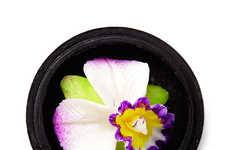
Ceramic 3D Prints Maintain Their Intricate Surfaces by Compensation
Amelia Roblin — March 13, 2014 — Art & Design
References: eragatory.blogspot.be
The designer of these Ceramic 3D Prints aimed to account for the detail and definition that is often lost in pottery once a glaze has been applied. For Eragatory, it would not have been sufficient to sculpt subtle features in the clay, for these would be softened and diminished in the later stages of production.
The solution was to create a collection of vases that embodies some obvious formal intricacies, penetrating the very objects. The fibrous forms even provide the viewer with a look inside the vessels. To contrast this for an enhanced effect, the creator juxtaposed these pronounced textures with a layer of smooth material around the tops of the vases. The Ceramic 3D Prints serve as intriguing artistic items, yet offer practicality as food-safe containers for your kitchen.
The solution was to create a collection of vases that embodies some obvious formal intricacies, penetrating the very objects. The fibrous forms even provide the viewer with a look inside the vessels. To contrast this for an enhanced effect, the creator juxtaposed these pronounced textures with a layer of smooth material around the tops of the vases. The Ceramic 3D Prints serve as intriguing artistic items, yet offer practicality as food-safe containers for your kitchen.
Trend Themes
1. Intricate Texture Preservation - Ceramic 3D printing techniques that maintain the detailed surfaces of pottery, even after glazing, present disruptive innovation opportunities in the art and home decor industries.
2. Fiber-like Structures - The use of fibrous forms in ceramic 3D prints offers disruptive innovation opportunities for designers in the fashion and textile industries, allowing for the creation of unique and intricate patterns.
3. Texture-contrasting Design - Juxtaposing pronounced textures with smooth materials in ceramic 3D prints opens disruptive innovation opportunities for product designers in industries such as furniture and interior design, creating visually interesting and tactile objects.
Industry Implications
1. Art - Incorporating ceramic 3D printing techniques that preserve intricate textures opens up disruptive innovation opportunities for artists, allowing them to produce detailed and visually captivating sculptures and pottery.
2. Home Decor - The use of ceramic 3D printing to create vases with fibrous forms and preserved textures presents disruptive innovation opportunities for the home decor industry, providing unique and visually appealing decorative pieces.
3. Fashion - Integrating fibrous forms in ceramic 3D prints allows for disruptive innovation in the fashion industry, enabling designers to create avant-garde accessories and garments with intricate and standout patterns.
3.9
Score
Popularity
Activity
Freshness























